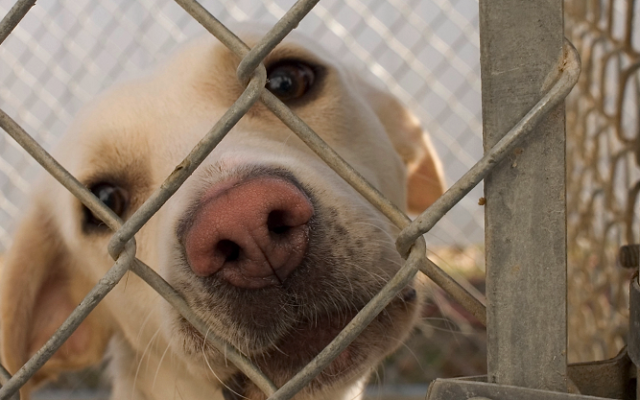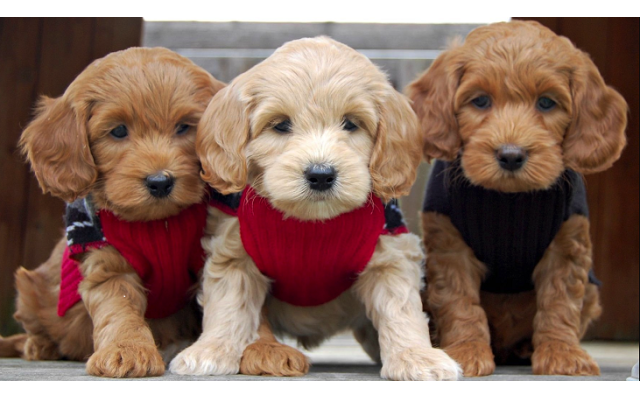Designer Doodles Keep Breeders Busy
Humane Society representative Debra Berger suggests alternatives to breeders, with shelters currently “bursting at the seams.”
The demand for pandemic pets, particularly for highly fashionable purebreds and designer dogs created through crossbreeding, remains strong. During the early months of the pandemic, demand often outpaced supply, with puppies being adopted to fight loneliness and isolation.
According to the American Society for the Prevention of Cruelty to Animals, one out of every five American households has adopted a new pet during the pandemic. That adds up to over 23 million new homes for animals.
But, even with the relaxation of restrictions, some owners are willing to pay big money for the dog of their dreams. They can still expect to pay between $2,500 to $5,000 for the most desirable designer crossbred dogs, including labradoodles, goldendoodles, cavapoos and cockapoos — breeds created through crossing poodles with Labrador retrievers, golden retrievers, Cavalier King Charles spaniels and cocker spaniels, respectively.
The doodles have created a strong following because of their intelligence, liveliness, good humor and, in many cases, irresistible good looks and personality.
They’re a common sight along the Atlanta BeltLine and in the city’s parks. In some American cities, these designer breeds are so common that a backlash has developed against the apparent lack of variety among those out for a stroll with their pets.

The doodle craze is particularly distressing to Debra Berger, the Georgia representative of the U.S. Humane Society. She laments that the popularity of the mixed breeds has kept people away from local animal shelters, which, she maintains, are “bursting at the seams.” In the past month, for example, Fulton County Animal Control has taken in over 600 animals.
Despite record demand for adoptions during the first year of the pandemic, most shelters, according to Berger, have sizable inventories.
“My biggest concern about fashionable dogs is that some people purchase a dog based on trends and marketing messages. And when people purchase dogs that were intentionally bred and sold for profit, other healthy and adoptable dogs remain homeless and may be euthanized,” she told the AJT.
Even the man originally responsible for launching the labradoodle trend regrets it. Wally Conron, who worked as a breeder at the Royal Guide Dogs Association of Australia, told a local podcast there that he had “opened a Pandora’s Box and released a Frankenstein monster.”
In 1989, Conron was hoping to create a guide dog for a woman in Hawaii whose husband was allergic to longhaired animals. He crossed a male poodle with a female Labrador to produce a dog that became a longtime devoted companion. But, as Conron told Psychology Today magazine, he regrets setting off the doodle boom.
“People ask me, ‘Aren’t you proud of yourself?’ I tell them: ‘No! Not in the slightest.’ I’ve done so much harm to pure breeding and made many charlatans quite rich,” he said. “I wonder, in my retirement, whether we bred a designer dog — or a disaster!”

Overbreeding, and the changes in an animal’s physical and psychological make-up caused by the genetic mutations that accompany it, has long troubled many breeders. The personality changes that have occurred in cocker spaniels over the years, for example, or the breathing issues common in today’s fashionable and expensive English and French bulldogs, or hip dysplasia in German shepherds are just three of the more common problems that breeders have had to contend with over the years.
Problems can multiply when so-called puppy mills and backyard breeders are involved in sales to individuals and pet stores. Berger, the Human Society’s representative, points out that some of the worst examples of breeding abuse in recent years have occurred in Georgia.
“For our organization, this is the crux of the matter. As a breed becomes more popular — like doodles — puppy mills tend to increase the output of that breed, creating many unhealthy puppies and worse, keeping their parents in horribly cruel conditions,” she said.
Even the best goldendoodles are prone to hip dysplasia and, according to a comprehensive study published in the National Institute of Health’s Library of Medicine, Australian Labradoodles have a genetic disposition for retinal or oculoskeletal dysplasia, an eye disease.
And the main selling points of the breed — that it won’t cause allergies and that it doesn’t shed — have been called into question, says Berger.
“Doodles have been marketed as hypoallergenic,” she explained. “But there’s no guarantee that any dog is hypoallergenic. Doodles generally don’t shed, but people can still be allergic to their dander.”
Still, none of this has made much of a dent in the popularity of the designer breeds. The Nationwide Mutual Insurance Company, a leading insurer of dogs, estimates that, as a group, the designer doodles would place fourth in America as the most frequently insured dogs, just behind Labrador retrievers, golden retrievers and French bulldogs.
- Pets
- Community
- Doodle dogs
- Debra Berger
- Humane Society of United States
- Georgia Humane Society. Pets
- cross-breeding
- Nationwide Mutual Insurance Company
- hypo-allergenic dogs
- dog eye disease
- Wally Conron
- Bob Bahr
- American Society for the Prevention of Cruelty to Animals
- labradoodles
- goldendoodles
- cavapoos
- cockapoos
- Labrador retrievers
- golden retrievers
- Cavalier King Charles spaniels
- cocker spaniels
- Atlanta BeltLine
- Fulton County Animal Control
- Royal Guide Dogs Association of Australia
- Psychology Today
- National Institute of Health’s Library of Medicine




comments